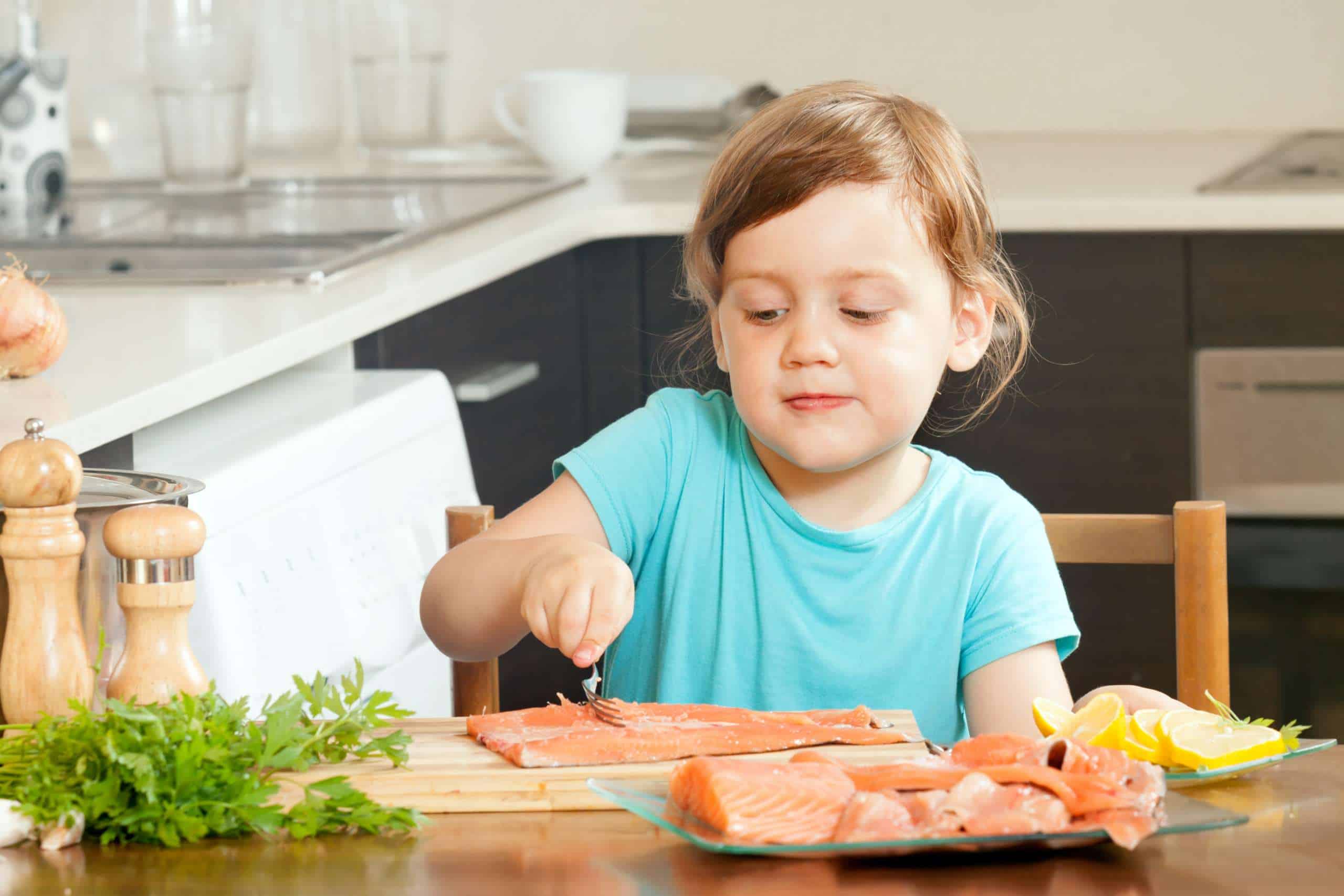
Fish is an extremely valuable component of a child’s diet, especially an active one. What are the main advantages of eating fish and how to introduce it to the menu of your child?
Why should children eat fish regularly? They are an extremely rich source of nutrients necessary for the development of their body. What is more, they prevent many diseases that may develop in the future.
Among other things, fish are rich in protein. This is a nutrient that plays a key role in building strong bones and muscles and in regenerating skin damage. Protein also helps maintain healthy skin, hair and nails. It has a positive effect on the lungs and heart.
Fish are also rich in a number of important vitamins and minerals. You can find in them, among others, zinc, iodine and selenium. The last ingredient is a strong antioxidant, which protects the body from toxins and effectively prevents cancer. Fish rich in fat, such as, among others, mackerel, trout, salmon, herring and sardines contain large amounts of vitamins A and D. The former has a positive effect on the condition of the eyes and skin, the latter helps in the absorption of protein, which supports bone growth.
It is also worth mentioning here that fish are rich in B vitamins, which make the body able to accumulate large amounts of energy. Vitamin B12, on the other hand, affects the production of new blood cells. However, that is not all. Fish also contains Omega-3 fatty acids, which play a key role in brain and nervous system development. During pregnancy, this ingredient is supplied to the fetus by the mother. After birth, the main sources of omega-3 fatty acids are the fresh mother’s food and milk mixes. As research shows, they are effective in preventing heart disease, dyslexia and ADHD.
Which fish species are best for young children? You can safely give them freshwater and marine species. Both lean fish, such as hake, zander, cod and pollock, and fatty fish, such as herring, halibut, salmon and mackerel, work well here.
It is not recommended to give panga to small children. This is due to the fact that it is very often bred in dirty, standing water and may contain various toxic substances. Butter fish won’t do any good here either. It has indigestible waxes that can cause food poisoning.
Every parent should also realize that fish flesh is easily contaminated with heavy metals and toxins. Consequently, it is best to purchase products from a reliable source, such as recommended fish stores that have trusted suppliers.
Parents who are unsure about the country of origin or breeding method should opt for small fish. This is because the risk of them being contaminated with toxins is much lower due to the fact that they have been in the water for a shorter period of time. Long-lived fish may contain several dozen times more harmful substances.
Children should not eat fish in bread crumbs, because they may contain various artificial additives and preservatives aimed at enhancing the taste. They should also not be given fish sticks, which, apart from fish meat, may contain ground animal flesh.
What should you consider when choosing fish for your child? First of all, look for freshness. When buying, pay special attention to their smell, which should not be sharp. Gills should be red and without traces of mucus, fins – springy and not dried out, and scales – moist and shiny (in addition, they should not come off the skin).
Featured Image: Freepik